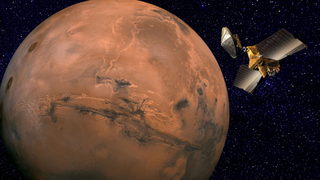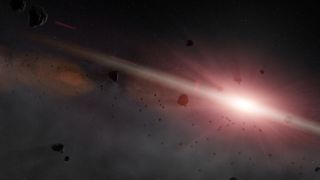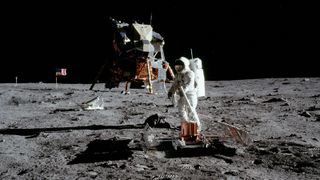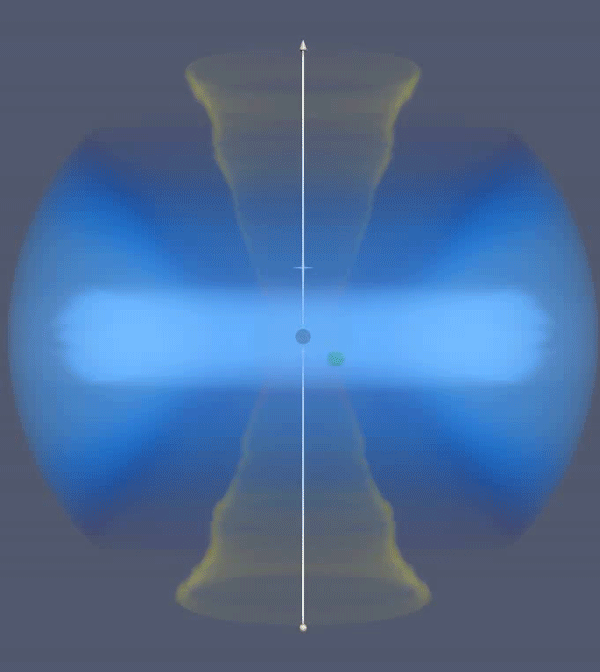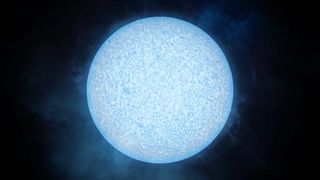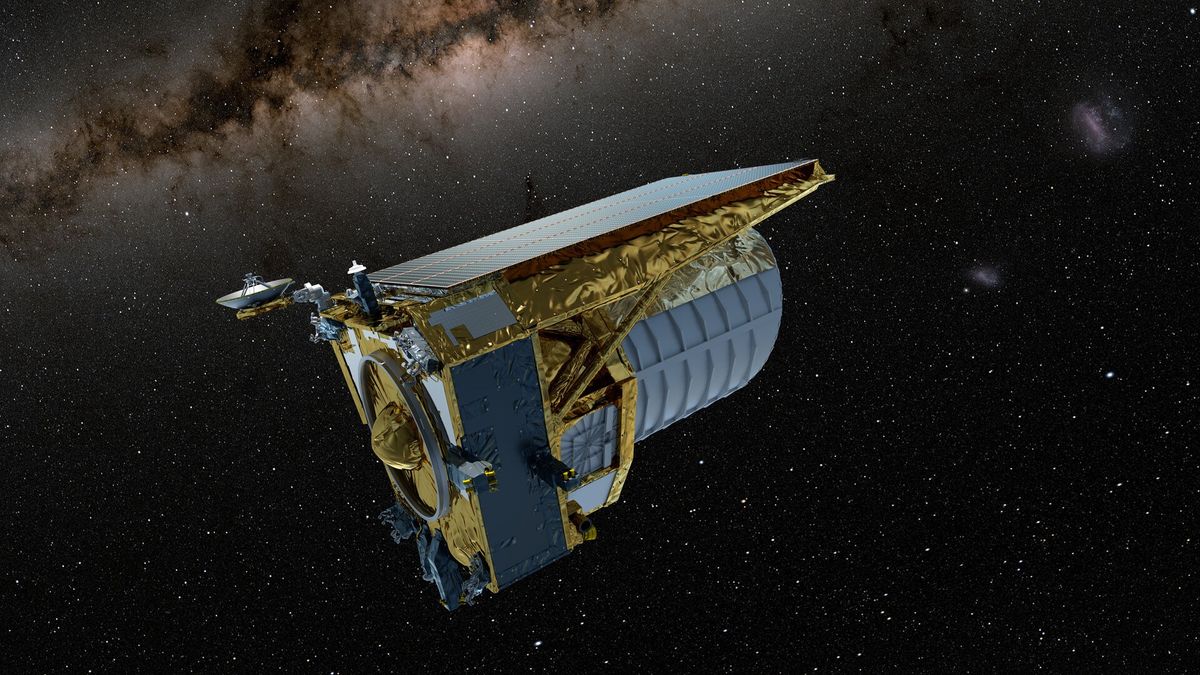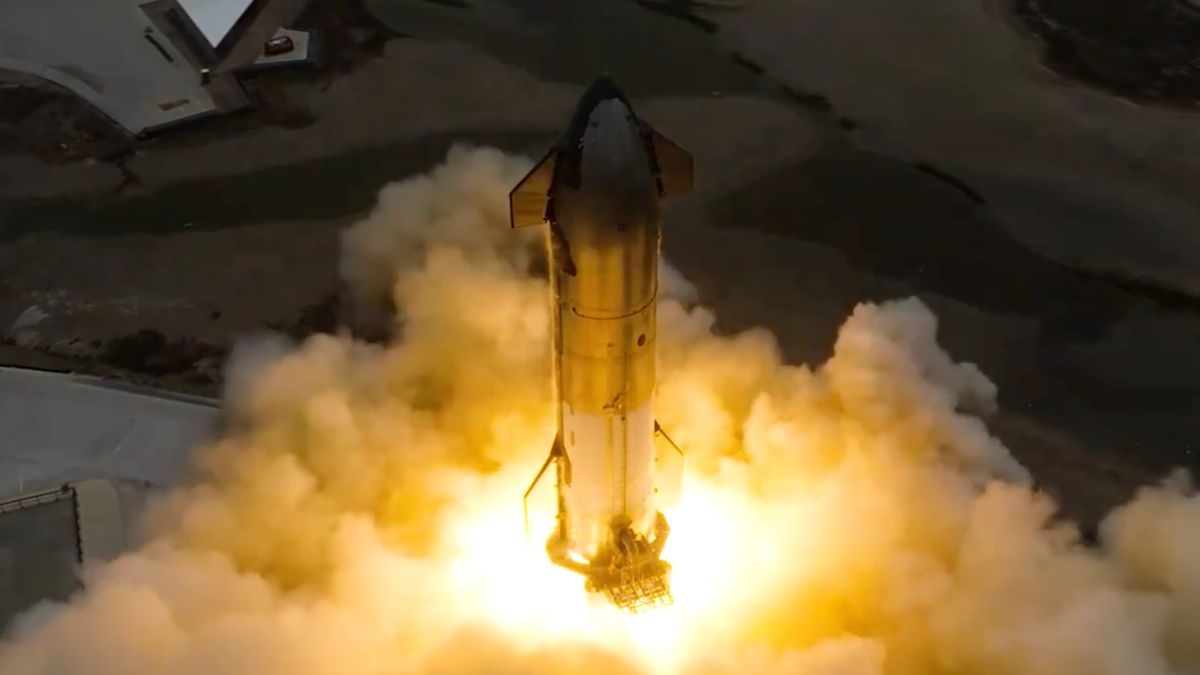Over two million years ago, a giant asteroid slammed into Mars, scarring the surface with one massive crater and around two billion smaller individual craters. These secondary craters appear across a region of 1,000 miles (1,800 kilometers), making this asteroid event one of the biggest impacts seen on the Red Planet in relatively recent history. Asteroids massive enough to create widespread destruction like this are estimated to impact Mars just once every 3 million years. The impact occurred at the equator of Mars in a region humanity has named Elysium…
Read MoreCategory: The Moon
Our moon
Stardust particle locked in meteorite holds secrets of a star’s explosive death
Scientists have discovered a rare stardust particle that came from the explosive supernova death of a distant star. This speck, it seems, is locked within an ancient meteorite. The grain of dust, though small, can help tell a story of stellar life, death and rebirth that spans almost the entire 13.8 billion-year history of the cosmos. It could also allow scientists to unlock the secrets of a recently discovered type of star that dies in a unique supernova explosion. “These particles are like celestial time capsules, providing a snapshot into…
Read MoreOverlooked Apollo data from the 1970s reveals huge record of ‘hidden’ moonquakes
The moon is much more seismically active than we realized, a new study shows. A reanalysis of abandoned data from NASA’s Apollo missions has uncovered more than 22,000 previously unknown moonquakes — nearly tripling the total number of known seismic events on the moon. Moonquakes are the lunar equivalent of earthquakes, caused by movement in the moon’s interior. Unlike earthquakes, these movements are caused by gradual temperature changes and meteorite impacts, rather than shifting tectonic plates (which the moon does not have, according to NASA). As a result, moonquakes are…
Read MoreSupermassive black hole’s mysterious hiccups’ likely caused by neighboring black hole’s ‘punches’
A hiccuping supermassive black hole has alerted astronomers to a whole new type of black hole behavior. In 2020, a previously quiet black hole at the heart of a galaxy about 800 million light-years from Earth, and with a mass equivalent to 50 million suns, suddenly erupted, brightening the material around it by a factor of 1,000. A team of researchers thinks that these periodic eruptions are caused by a second, smaller black hole slamming into a disk of gas and dust, or “accretion disk,” surrounding the supermassive black hole, causing…
Read MoreHow are extreme “blue supergiant” stars born? Astronomers may finally know
Astronomers may have solved the mystery of how some of the brightest and hottest stars in the cosmos are born. The team, led by researchers at the Instituto de Astrofísica de Canarias (IAC), found clues that suggest blue supergiants are created when two stars in a binary system spiral together and merge. B-type blue supergiant stars are at least 10,000 times brighter, two to five times hotter and 16 to 40 times more massive than the sun. Blue supergiants are so extreme that scientists have theorized that they may have…
Read MoreEuclid ‘dark universe’ telescope’s vision restored by deicing campaign
The Euclid “dark universe” probe’s ailing vision has been restored after an experimental deicing campaign successfully evaporated ice from the telescope’s mirrors, the European Space Agency (ESA) announced on Tuesday (March 26). Ice layers as wide as a single DNA strand had collected on Euclid‘s mirrors, causing a small but progressive decrease in the amount of starlight the telescope was capturing, the agency said last week. So, scientists began “deicing” Euclid for the first time — from a million miles away — by heating one of its six mirrors…
Read MoreApril 8 total solar eclipse could bring uptick in fatal car crashes, scientists caution
The total solar eclipse on April 8 could come with an uptick in fatal car crashes, scientists caution in a new report. It’s more common to hear about eclipse-related eye injuries than car crashes. But during the last total solar eclipse in North America — the “Great American Eclipse” of 2017 — the U.S. saw a brief-but-significant increase in fatal crashes, researchers warned in a research letter published Monday (March 25) in the journal JAMA Internal Medicine. The surge in crashes wasn’t tied to the daytime darkness caused by the eclipse. Actually, “we see a significant decrease…
Read MoreSpaceX fires up Starship rocket ahead of 4th test flight (video)
SpaceX’s next Starship vehicle has breathed fire ahead of its coming test flight. A 165-foot-tall (50 meters) Starship upper stage just fired up all six of its Raptor engines in a full-duration “static fire” test at SpaceX‘s Starbase site in South Texas, the company announced today (March 25). Static fires, in which engines are briefly lit while a vehicle remains anchored to the pad, are common prelaunch tests. SpaceX conducted this one to prep for the fourth Starship test flight, which could take place as soon as early May. Related:…
Read MoreKeep the lines of communication open by building your own infrared transmitter
(Image credit: Future) The idea of being in a remote location, unable to communicate with civilization, is foreign to most people. With cell phones, Wi-Fi, and radio readily available to us, we hardly think about how difficult it would be to communicate over long distances without them. But that could be a reality for members of the United States Space Force in the future. What do you do when your ability to communicate is hindered? In the second episode of the Space Force STEM Challenge, we show you how to…
Read MoreNASA is holding a total eclipse 2024 briefing tomorrow. Here’s how to watch it live
On April 8, a total solar eclipse will sweep across North America. The path of totality — a 115-mile (185-kilometer) wide route where the moon will cover 100% of the sun‘s disk — stretches through Mexico, 15 U.S. States and Canada. It is shaping up to be one of the most watched total solar eclipses ever with over 31 million people living within the path of totality alone. With all the juiced-up anticipation for the celestial event, there is a huge amount of pressure to get “E-day” just right. The…
Read More